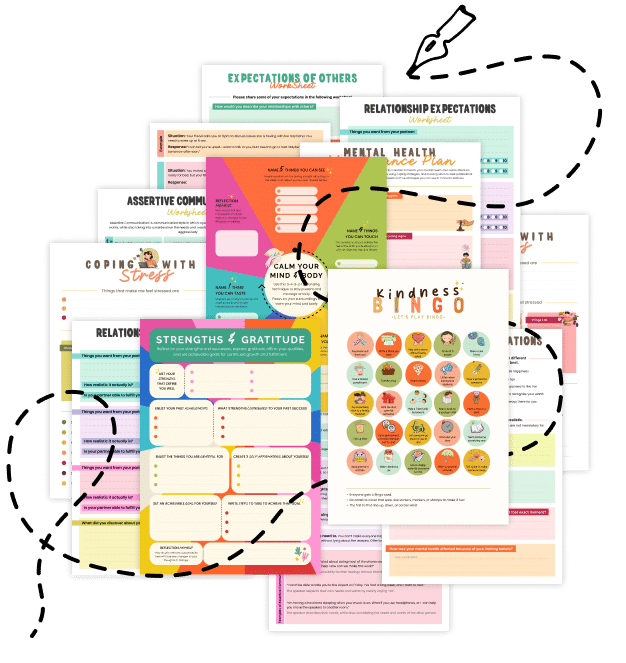20 Things About Stereotype Threat Mitigation
Learn about stereotype threat mitigation and create an environment that fosters confidence and inclusivity. Discover 20 essential insights and practical strategies for mitigating stereotype threat in academic, professional, and social settings.
1. What Is Stereotype Threat?
Stereotype threat is the anxiety or concern that one might confirm a negative stereotype about their social group. This pressure can impair performance and self-confidence, even in highly capable individuals.
2. The Power of Expectations
When people are aware of a stereotype about their group, the fear of confirming that stereotype can lead to self-doubt and decreased performance—even if the stereotype is untrue or exaggerated.
3. Everyday Examples
For example, women in math-intensive environments or minority students in academic settings may experience additional pressure, which can impact their test scores and participation.
4. Why Mitigation Matters
Mitigating stereotype threat is essential because it not only improves individual performance but also fosters a more inclusive, supportive environment where everyone can thrive.
5. Creating an Inclusive Environment
An environment that actively discourages stereotypes and reinforces positive identities helps reduce the pressure of stereotype threat. This can include diverse role models and inclusive language.
6. The Role of Self-Affirmation
Self-affirmation exercises—where individuals reflect on their core values and personal strengths—can buffer the negative effects of stereotype threat by reinforcing a positive self-image.
7. Emphasizing Growth and Learning
Shifting the focus from innate ability to the importance of effort and learning helps minimize the impact of stereotypes. A growth mindset can empower individuals to view challenges as opportunities.
8. The Impact of Feedback
Constructive and supportive feedback, rather than criticism based on stereotypes, can help individuals build confidence. Encouraging progress and effort can diminish the fear of confirming negative stereotypes.
9. Role of Educators and Leaders
Teachers, mentors, and managers play a crucial role in mitigating stereotype threat. By setting high, yet achievable expectations and promoting a positive culture, they can help individuals overcome pressure.
10. Diversity and Representation
Seeing diverse role models in positions of success can counteract negative stereotypes. Representation in leadership, academia, and media sends a strong message that all groups can excel.
11. Clear Communication of Standards
When expectations are clearly communicated and emphasize improvement rather than fixed ability, individuals are less likely to feel that their performance is being judged based on stereotypes.
12. Encouraging Collaborative Learning
Group activities and collaborative projects can help mitigate stereotype threat by fostering a sense of belonging and reducing the focus on individual performance.
13. Developing Coping Strategies
Teaching stress management techniques—like mindfulness or deep breathing—can help individuals manage the anxiety associated with stereotype threat and improve overall performance.
14. Awareness and Education
Raising awareness about stereotype threat among both individuals and institutions is key. Workshops, seminars, or classroom discussions can help people recognize and address these biases.
15. Challenging Stereotypes Actively
Encourage critical discussions about stereotypes. When people learn to question and challenge stereotypes, the power of these negative expectations diminishes over time.
16. Building Resilience Through Success
Celebrating achievements and progress can help individuals build resilience. Recognizing success, even in small steps, reinforces the idea that they can overcome challenges regardless of stereotypes.
17. Using Data and Research
Sharing research findings about stereotype threat can help demystify its effects. Evidence-based strategies empower individuals and institutions to implement changes that reduce its impact.
18. Personal Reflection
Encourage individuals to reflect on how stereotype threat may be affecting them and to develop personal strategies to counteract it. Journaling or discussion groups can be effective.
19. Policy and Institutional Changes
Organizations can mitigate stereotype threat by implementing policies that promote equity, diversity, and inclusion. Regular training and a commitment to a supportive culture are essential.
20. Related Topics to Explore
- Growth Mindset: Embracing the belief that abilities can be developed through effort.
- Self-Affirmation: Reinforcing core values to buffer against stress.
- Adaptive Confidence: Building realistic self-assurance in the face of societal pressures.
- Cognitive Defusion: Techniques to distance oneself from negative self-talk.
Quick Tips for Mitigating Stereotype Threat
- Promote Inclusive Language: Use language that reinforces diversity and individual strengths.
- Highlight Role Models: Share success stories from diverse individuals to inspire confidence.
- Encourage Self-Affirmation: Practice exercises that help affirm personal values and strengths.
- Set Clear, Growth-Focused Expectations: Focus on effort and improvement rather than innate ability.
- Foster Collaborative Environments: Create group settings where shared success and support are prioritized.
Stereotype Threat Mitigation is vital for ensuring that individuals from all backgrounds can perform at their best without the burden of negative stereotypes. By implementing inclusive practices, promoting self-affirmation, and fostering a growth mindset, you can create environments that empower people to thrive. Whether in education, the workplace, or social settings, actively addressing stereotype threat leads to more resilient, confident, and high-performing individuals.
Share this article with anyone interested in building a more inclusive and supportive environment. By understanding and mitigating stereotype threat, we can pave the way for a fairer, more empowered society where every voice is valued.

